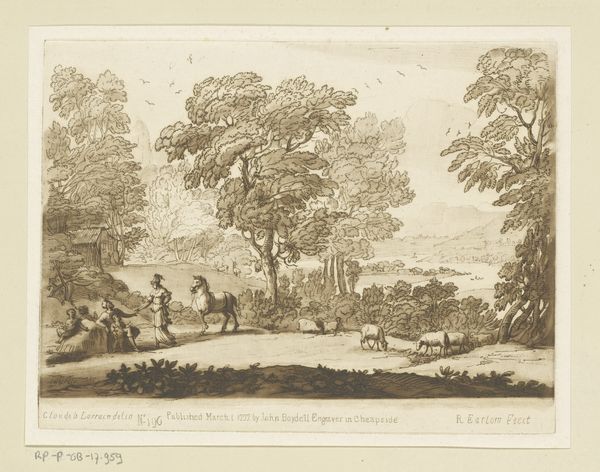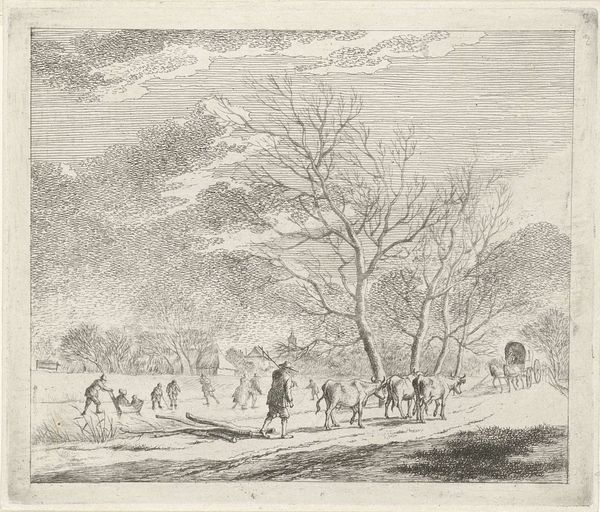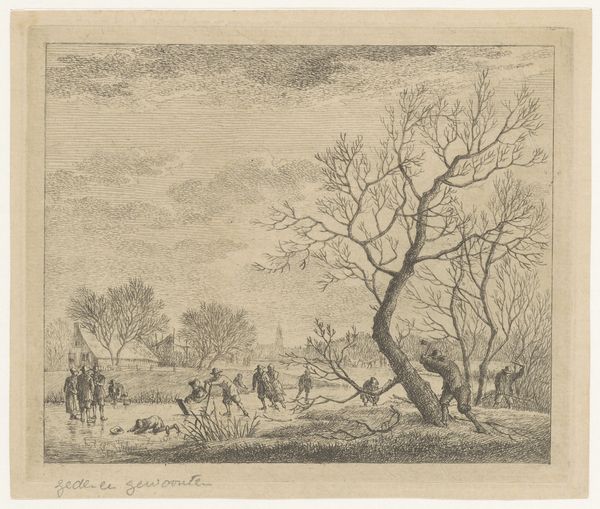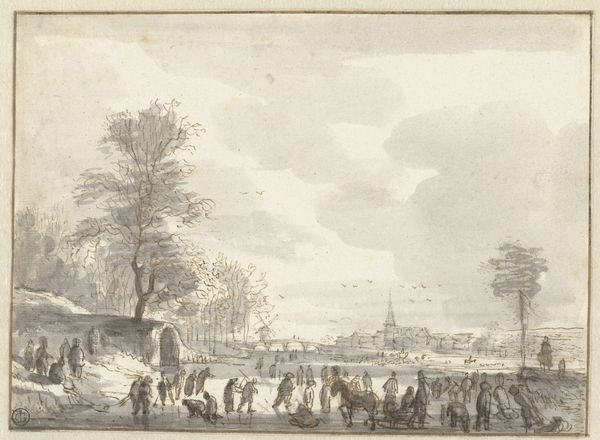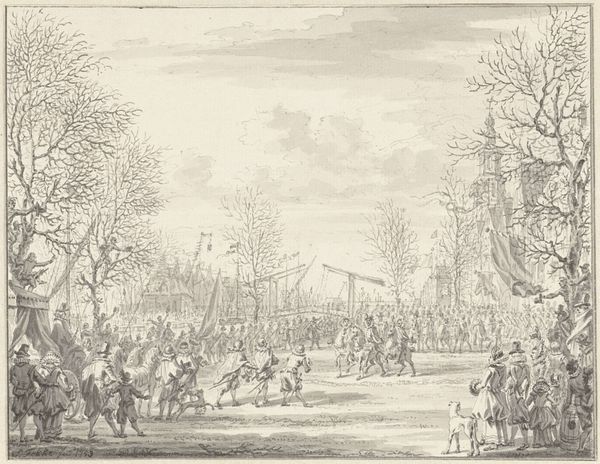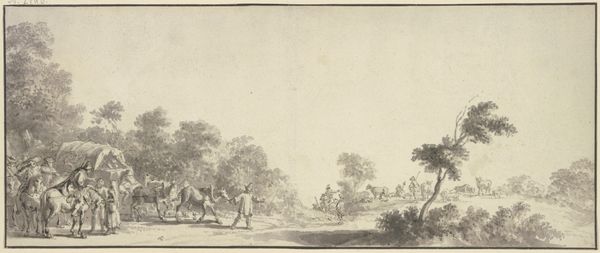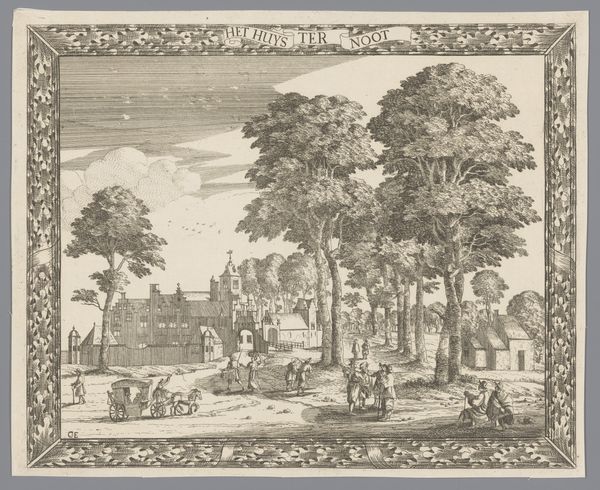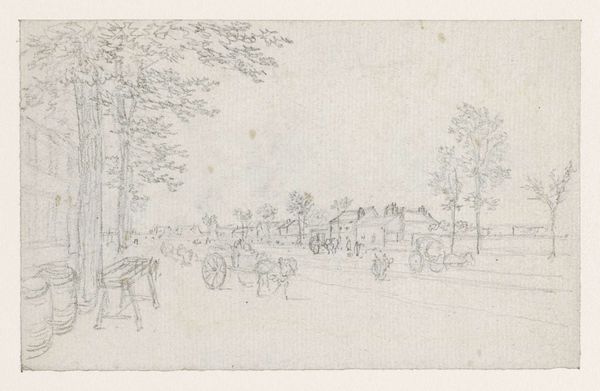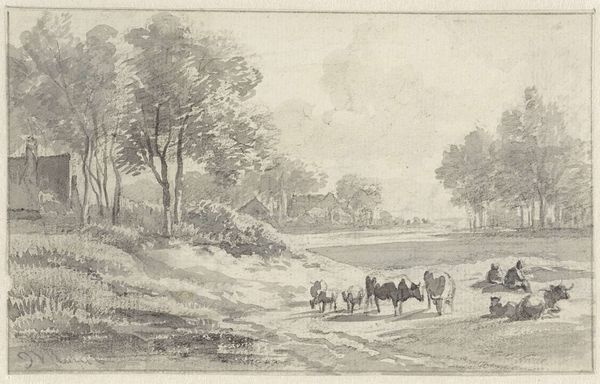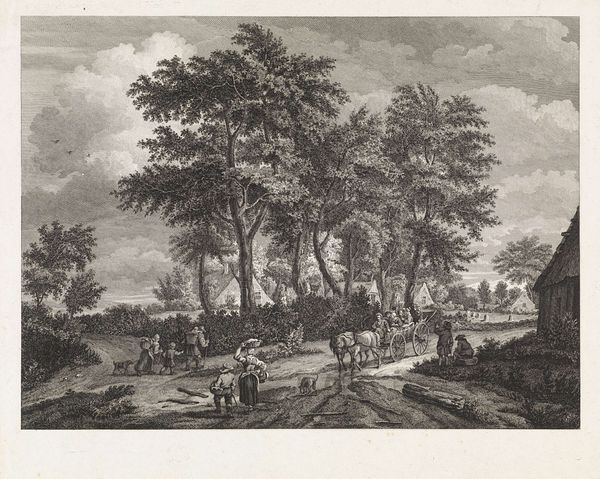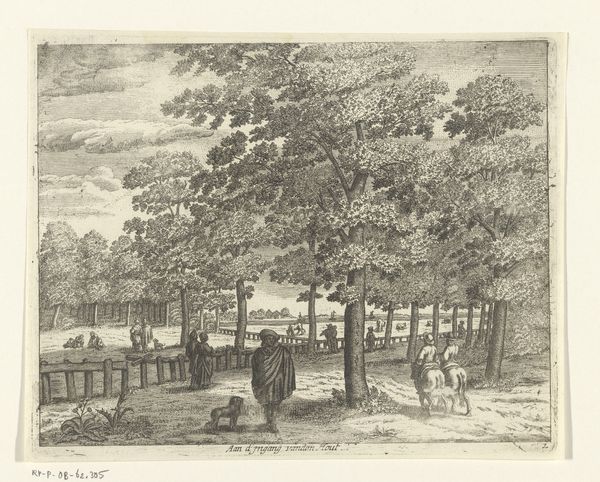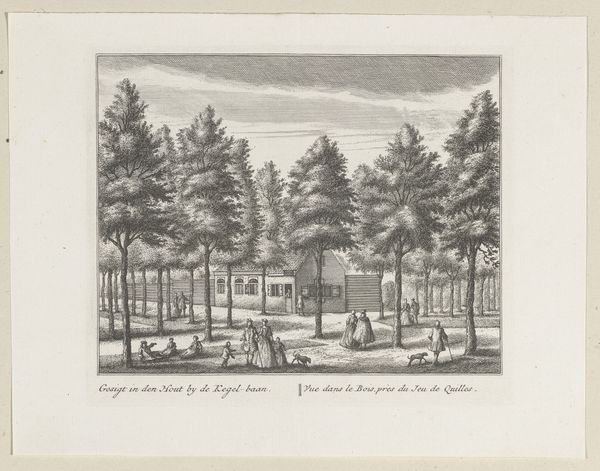
Dimensions: height 320 mm, width 497 mm
Copyright: Rijks Museum: Open Domain
Curator: Looking at this work, it is fascinating how seemingly mundane scenes reveal a wealth of historical narratives if we just pause to consider their context. This is "Gezicht op fort de Waterplaats aan de Molenvliet te Batavia," a Dutch Golden Age landscape attributed to A. de Nelly, dating back to between 1762 and 1783. It's rendered with pen and engraving techniques. Editor: Right, my first impression is the almost ghostly stillness—the pale, muted tones, the long shadows. Despite the figures populating the foreground, there's this overwhelming sense of quiet observation, a distant dream of a place, maybe even a future one imagined back in the Golden Age. It reminds me of early photography…a picture that doesn’t have quite a grasp on its reality, maybe. Curator: Precisely, that detachment resonates with colonial representation, wouldn't you say? The print offers an allegedly objective perspective, carefully composed to highlight the infrastructure, the figures, the spatial organization—but what about the human impact of Dutch presence in Batavia, now Jakarta? What perspectives were purposefully excluded? Editor: It’s that banner, though, flapping in the sky that really snags my attention, isn’t it supposed to direct my attention. What does it say on it? Is it possible that Nelly might be playfully highlighting Dutch self-importance amidst this meticulously organized landscape? Is this intentional critique…or ironic approval? Curator: Yes, there is irony here; by emphasizing order, discipline and the military aspect of the composition through the detailed depiction of marching figures with rifles. We’re invited to read a Dutch aspiration of exerting control over the region of Batavia. We need to remember that landscapes have served as justifications of colonization, appropriation and territorial expansion, often marginalizing the actual local population’s representation and rights to their native land. Editor: I never looked at baroque engraving quite this way; so, considering how A. de Nelly carefully builds that aerial text in opposition to what remains left on the lower registers; that sky-high statement gets framed not just by Dutch ambition and enterprise... but by an almost palpable feeling of loss. Is there more loss in view than pride in view here. Hmmm. Curator: I think we are onto something very significant! Reflecting on all we’ve seen here it becomes clear that what truly engages us is the potential art holds in unraveling not just the ‘what’ but the ‘why’ behind artistic intentions. Editor: Absolutely. Art, like a mirror, reflects back what we bring to it, allowing a quiet landscape in Batavia to tell a very powerful story, a global one!
Comments
No comments
Be the first to comment and join the conversation on the ultimate creative platform.
